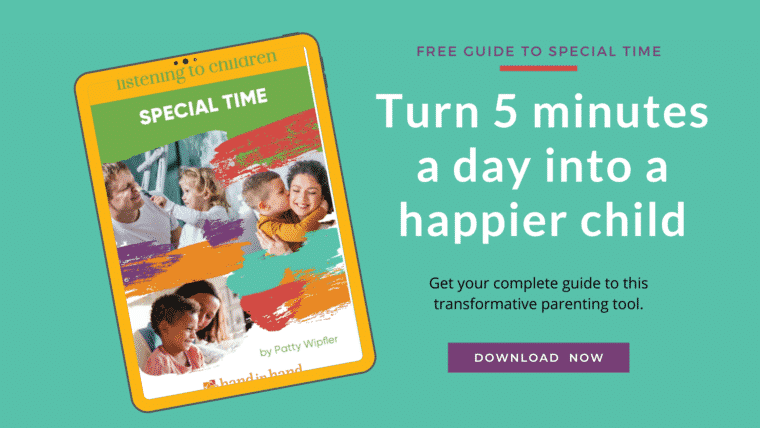In Part 1, Setting A Connection Plan In Place For The Holidays we looked at a family on holiday. Three siblings were happily playing, until suddenly, without much warning, the bigger child pushed a younger one into the pool.
This showed how the children had lost their sense of connection and how their behaviour was now driven by difficult feelings which are not “thoughtful”, caring or workable.
In that post, I talked about having a Connection Plan to help the holiday go well. A Connection Plan can help keep your children in good shape, and will give you room to step in, when necessary, to set limits that help resolve unworkable behaviour.
Building Connection Credits
Step one in your Connection Plan is to build up a sense of connection in your family. It's putting connection credits in the relationship bank account.
A healthy relationship bank account will help to carry your family through difficult times, such as when the family, or family members, are under stress for some reason.
Events like starting a new job, illness, a death in the family, starting school, or (odd as it might sound) getting ready for and taking a holiday, can all use up connection credits. When it happens, the routines of daily life feel more difficult and the chance that your children will start squabbling with one another increases.
Resolving Sibling Squabbles
The difficulties your children have with each other also have to do with their sense of connection with you.
To some extent, they are bickering with each other over you. Every child craves attention from you, and needs one-on-one time with each of their parents or other important adults in their life.
Offering them a regular time when they know they have all of you, and won't have to share you, eases the sense that they are competing for a scarce resource.
As Patty Wipfler, founder of Hand in Hand Parenting puts it, “When a child's “gas gauge” is nearing empty, it's time to put in more attention. You can plump up their capacity for tolerance. If their sense of connection with you is strong, they are better able to deal with whatever usually sets them off around their sibling.”
One of the most efficient ways to build “connection credit” is Special Time, an adult-child playtime.
Step 1: Special Time – The Big “Yes!”
A key element in building this relationship bank account is that your child has a deep sense that you are on their side. You'll be able to draw on this when you need to set a limit. Special Time is really good for this.
Here is how you can get started:
One-on-One: First, find some time that you can spend one-on-one with each of your children. Just you and each one of them, in turn. Don't leave anyone out, no matter how young or old. (Although what I am about to recommend will look a bit different with your 18-month-old than with your 15-year-old).
Set the timer: Decide how long you have – 5 minutes is fine to begin with, and you can work up to longer periods of 15 or 30 minutes. It's helpful to actually put a timer on, so the time has a clear start and finish (and you will see later there are other important reasons for using a timer).
Name it: It’s also helpful to give this time a name – “Special Time” will do, but you can call it by any name that works for you. This means that both you and your child understand that this time is different from other, more casual play-time or hanging out time.
Your full attention: In this time, give your child your full attention. Try to delight in them, lend them your confidence and enthusiasm. (Warning: You may need to turn off your phone, put it on silent, or even leave it in a different room.)
Follow their lead: In this time, tell your children you'll do whatever they want to do. Your child is in charge, as fully as possible while safe. Try not to offer direction, opinions, or suggestions. If they aren't sure what to do, then be pleased with them while you wait. Guaranteed, they will figure it out!
Try not to set limits: It is important to set as few constraints as possible on what you and your child can do in Special Time. This is especially important as you start out with this adventure of Special Time, although it’s a good general rule of thumb even if you have been paying attention to your children in this way for many months or years.
From time to time, issues come up in Special Time which may need limiting or guidance. Many parents ask how to handle Special Time and requests for screen time, for instance, but in general, and especially at first, do your best to do whatever your child wants. (Of course, you need to help keep it safe – but stretch yourself on this – we parents are inclined to worry about safety, and Special Time is a time to take some risks).
Pay close attention and notice: The point is to establish that you are really, truly on their side. You're working to create a space where they feel confident to show or tell you (in words or play) things which they might not be so sure you will approve of.
Resisting any temptation to direct or limit the play opens up a time where your child can raise topics and issues, because they understand that you are committed to keeping your own feelings and thoughts under wraps. This will allow you to truly see what your child is trying to tell you.
Special Time will probably be hard to do at first!
Trust me that it is a necessary and important part of the process.
You want to give your child the freedom to show what they are interested in, what they are preoccupied with and concerned about. Children spend their lives in environments where adults and older people define the agenda. This is a time for them to show you what they would do, or say, or think, if left to their own devices, and if they were free to speak.
Don't make it too long: If you are struggling to agree to what they want to do, or find it hard not to get distracted, make the time short. This way, you know you only have to “hang on” for a little while.
Putting the timer on is as much for your benefit as theirs – you know exactly how long you have to last with that boring game with the trains, or seemingly endless and messy cooking experiments.
When I first started doing this kind of play with my daughter, I went out and bought the biggest timer I could find and stuck it in a prominent position. Many is the time when I've looked up from some activity I found hard to tolerate, relieved that there was only a minute to go!
Don't be afraid to finish: When the timer goes off, feel free to extend the time if your child asks and if you have the time and patience, but don't be afraid to end the time. Your child may get upset, and that is OK. They are showing you what this time has meant to them, and they are probably working through feelings about all the other times they have had to stop before they wanted to.
If you know your child will get upset, make sure you finish with enough time to listen to their upset at the end. Listening in this way will ease the emotional tensions your child is carrying about many things, and you may find over time that other aspects of family life which were difficult in the past, slowly ease up.
But I hang out with my children all the time anyway!
It can seem odd that we might have to spend even more time paying close attention to our children! Especially when they are little, it can feel like we don’t get much time to ourselves.
However, just because you aren’t getting to the tasks you need or would like to be doing, or just because you feel like you have been paying them attention, it doesn’t mean that they have noticed!
You can have dedicated the better part of your day to it, and their connection credits might still be low! The thing about Special Time is that it draws everyone's attention to the fact that you are paying attention – and we value what we actually notice.
So if you are at that stage of parenting where you are spending a LOT of time with your children, you might do well to shift some of that “general hang out time” to Special Time.
Connected to this, Special Time needs a beginning and an end which is clear to everyone. It is, after all, “Special”. It works because it is time-limited. Your child knows just how long they have your full attention, and they will use that time well once they understand the commitment you are making.
When they are confident of your attention in Special Time, they can embark on experiments and take some risks.
When you need to step in
Special Time is also one of the most efficient ways to communicate to your child that you are on their side. They will borrow from this if you need to intervene more actively when they start fighting with one another.
Connection is the currency in your relationship bank account, and Special Time is a good way to make a deposit.
Building a sense of connection helps children make workable choices
Special Time is perhaps the most marvellous of our Listening Tools. There are so many ways that it works, but for this purpose, it builds connection credits and your children's sense of safety in their relationship with you. Children fighting with one another may be a sign that their sense of connection is diminished.
If your child is to have much chance of making better decisions when hard feelings come up around their siblings, they will need a strong sense of connection with you.
When bickering or fighting continues
Step one helps to build a deep sense of connection into your relationship with your children through Special Time. If this is not enough to keep things co-operative, then you'll probably need to move to a more direct intervention. Understand the importance of planning for trouble, keeping an eye on things through a “friendly patrol”, and limit setting, which I will cover in the next post.
Get a free guide to Special Time, a parenting tool that the World Health Organisation promotes as an ideal way to help your child feel safe, secure and seen.

